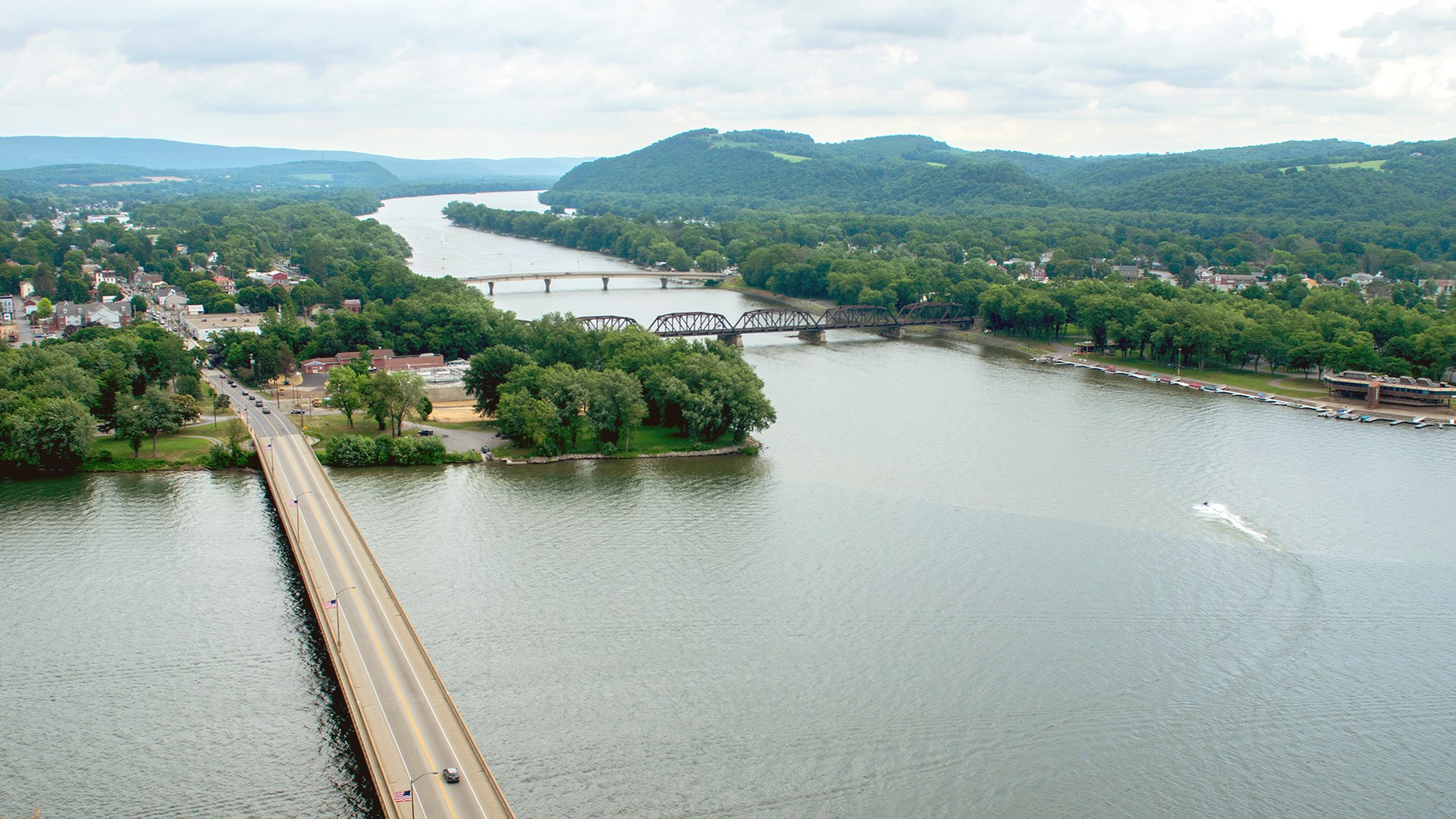
Central Pennsylvania: The Middle of Everywhere since 1760
History
Central Pennsylvania has been The Middle of Everywhere since the first European settlers arrived, and the region came of age through its prime location and abundant resources.
Near the major cities of the Northeastern United States, the region has always been blessed with plentiful raw materials and a robust infrastructure. When early settlers came to the area, the primary infrastructure was the Susquehanna River, which flows all the way to the Chesapeake Bay. Then, as now, the district had productive yet inexpensive land, and a reliable and hardworking population.
The first industry to blossom here was timber. In the 1760s, immigrants of Dutch, English, German, and Scandinavian ancestry found that the pristine forests and big river were perfect for a lucrative industry: logging. Soon the area was dotted with sawmills and floating timber.
The geography of the region is picturesque. Fertile farms give way to rolling hills and mountains. The Susquehanna runs north to south and serves as a recreational hub and point of historical pride.
Central Pennsylvania is comprised of 16 counties, roughly located about one hour south of the New York state line and an hour north of Harrisburg, PA. Its western boundary is State College, and its eastern boundary is Wilkes-Barre. The region’s largest cities and towns are State College, Wilkes-Barre, Williamsport, Hazelton, and Bloomsburg. Its major colleges and universities are Bucknell University, Lock Haven University, Lycoming College, Mansfield University, Pennsylvania College of Technology, and Pennsylvania State University.
Times have changed in some respects. This is no longer timber country. But everything that made central Pennsylvania so advantageous for timber – its location, resources, infrastructure, land, and workforce – has, today, made the region a thriving, cost-efficient hub for all kinds of industry and logistics.
Near the major cities of the Northeastern United States, the region has always been blessed with plentiful raw materials and a robust infrastructure. When early settlers came to the area, the primary infrastructure was the Susquehanna River, which flows all the way to the Chesapeake Bay. Then, as now, the district had productive yet inexpensive land, and a reliable and hardworking population.
The first industry to blossom here was timber. In the 1760s, immigrants of Dutch, English, German, and Scandinavian ancestry found that the pristine forests and big river were perfect for a lucrative industry: logging. Soon the area was dotted with sawmills and floating timber.
The geography of the region is picturesque. Fertile farms give way to rolling hills and mountains. The Susquehanna runs north to south and serves as a recreational hub and point of historical pride.
Central Pennsylvania is comprised of 16 counties, roughly located about one hour south of the New York state line and an hour north of Harrisburg, PA. Its western boundary is State College, and its eastern boundary is Wilkes-Barre. The region’s largest cities and towns are State College, Wilkes-Barre, Williamsport, Hazelton, and Bloomsburg. Its major colleges and universities are Bucknell University, Lock Haven University, Lycoming College, Mansfield University, Pennsylvania College of Technology, and Pennsylvania State University.
Times have changed in some respects. This is no longer timber country. But everything that made central Pennsylvania so advantageous for timber – its location, resources, infrastructure, land, and workforce – has, today, made the region a thriving, cost-efficient hub for all kinds of industry and logistics.